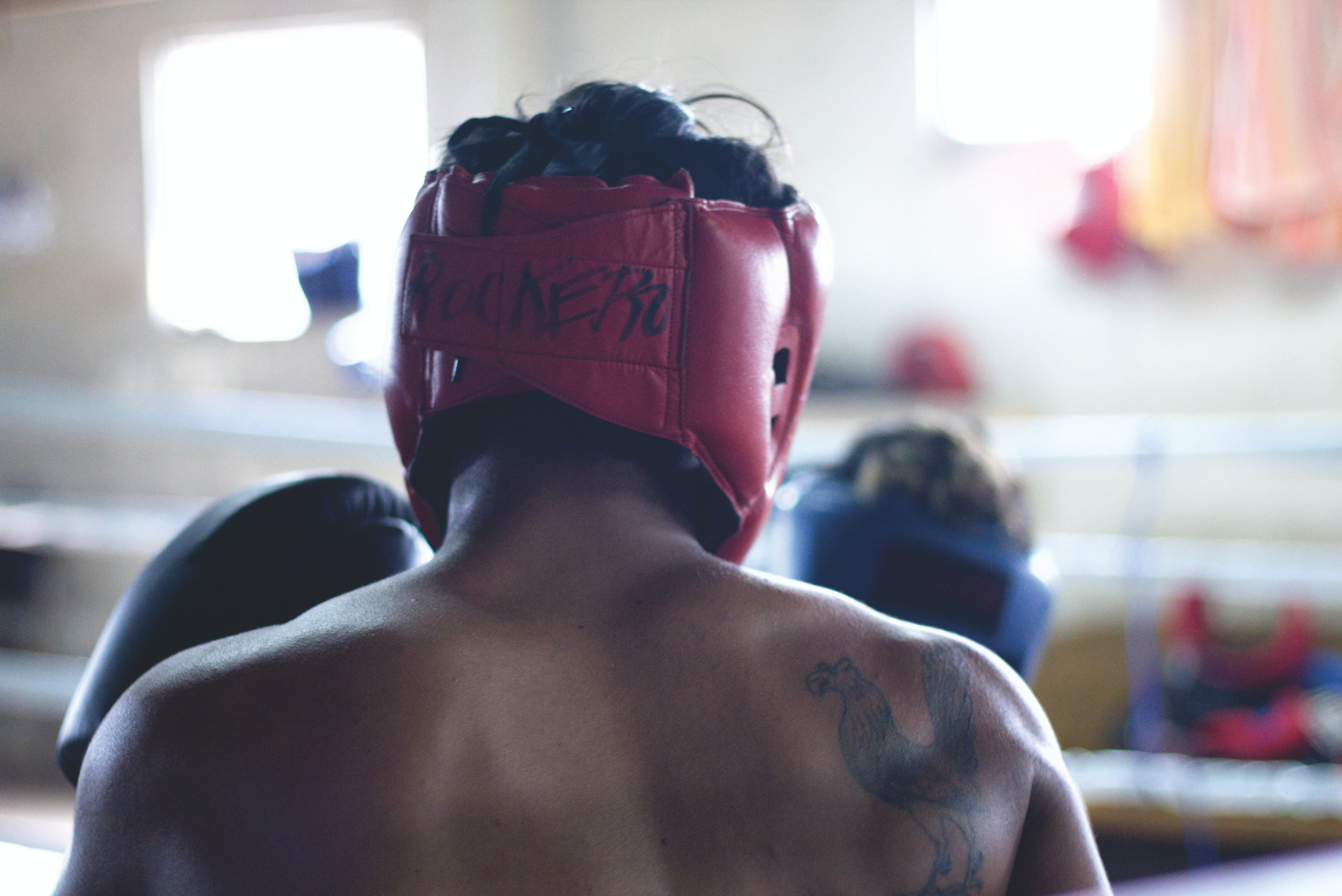Talented boxers who spend hours at the gym and fighting at the amateur level often wonder if they should make the sport a full time career. Maybe your coach or fellow athletes are confident that you'd succeed and even make some great prize money. Or perhaps you have always seen yourself as becoming the next Manny Pacquiao, Floyd Mayweather, or Muhammad Ali. Maybe you have a hard time imagining yourself doing anything else but boxing right now. What could be more alluring than winning under the bright lights of a gym among hundreds of cheering spectators? Or more rewarding than teaching your craft or owning your own boxing gym?
Whatever your motivations are, you might feel a bit scared or apprehensive about taking the next steps to becoming a pro boxer or making boxing a full time career. Professional boxing is not exactly a stable or steady job, and you likely already know that a major injury can halt or end a boxing career quickly. If you are considering a career in boxing and are wondering about how you might plan your career, you have come to the right place. This article will explore how boxers can make a living fighting and teaching boxing to others.
How important is it to get a boxing coach? Find out your options for learning to box in Canada.

Make Money with Your Boxing Moves in the Ring
So how much money can you actually make as a professional fighter? While the dream may be to make millions fighting on Pay-Per-View or cable television, the reality is that you will have to start somewhere. How often do you plan to compete? Will you be able to land an endorsement deal? Only the top 1% of boxers will make more than a million dollars a year, while the median earnings are closer to 50k a year.
Unlike many other jobs, where you might make an established salary or wage, the amount boxers earn is determined by a number of factors. You might want to think of yourself from an independent business perspective: what streams of revenue can you make with your talent? How much will coaching and training offset the amount you make in matches? How will you market your career and fights, and build a fanbase? Who will you trust to manage and support your career, and how much will it cost you?
Professional boxers do not compete often - usually between 2-7 times a year based on their expertise and status - which means you will likely need to supplement your earnings through other streams of revenue. You will also need to invest lots of time into your own training: you are a professional athlete!
In a boxing competition, you would typically share the "fight purse", the value of which is determined by a promoter. One fighter is typically the more popular fighter, and will get a larger percentage of the money. You will also be paying for your own coaching, management and federal income taxes. If that doesn't seem like enough to pay for your living expenses, it's because it probably isn't - especially in the early stages of your career. In the next section, we will discuss how you can make money as trainer or boxing instructor.
What are the different competition divisions in boxing? The answer may surprise you.

What is Boxing Weight Class Lbs?
As you start your foray into the world of professional boxing, it can be worth it to consider the different weight divisions you will fight in. Below is a summary of the different weight classes in pounds for boxing.
| Division | Weight |
|---|---|
| Heavyweight | 200 lbs. + |
| Light Heavyweight | 168 lbs. - 175 lbs. |
| Middleweight | 154 lbs. - 160 lbs. |
| Welterweight | 140 lbs. - 147 lbs. |
| Lightweight | 130 lbs. - 135 lbs. |
| Featherweight | 122 lbs. - 126 lbs. |
| Bantamweight | 115 lbs. - 118 lbs. |
| Flyweight | 108 lbs. - 112 lbs. |

Can Boxers Make Money Teaching Boxing for Beginners?
As we have already discussed, it can be tough to make a consistent income through fighting without becoming an elite fighter. This should not discourage you from pursuing a career in boxing, because as an amateur boxer you have already built a fantastic skill set that will equip you for a career in fitness and education. It should come as no surprise that there are thousands of people out there that would love to learn boxing and how to get into the sport at an amateur level - after all, that is how you likely ended up boxing yourself! There are also plenty of people that are seeking new and alternative workouts to challenge themselves physically beyond the standard fare of aerobics classes.
Boxing and fitness instruction is an excellent way to make extra revenue to supplement your work as a professional boxer. It's also an excellent way to share your knowledge, stay focused on your own training, and promote a love for boxing. First, you'll need to determine where you might hold your classes. The most obvious place to look will be your own boxing gym, though you can probably find other part time opportunities at more mainstream gyms where you might teach a boxing-inspired cardio class. Not sure if you know how to plan a fitness class? Check out classes at CanFit pro or your local community college to learn how to be an effective instructor and even receive a credential.
How young or old should you be to take up boxing? Find out if boxing is right for you.

Boxing Techniques to Teach New Students
So what kinds of techniques will you teach to the students in your classes? The first thing to consider will be what kind of class you are teaching. Are the goals of students to fight at a community or amateur level? Is the class to introduce students to boxing style fitness?
The first part of any boxing routine will be a warm-up. Some great warm-up moves to get pumped for a boxing workout include squat jumps, push-ups, running laps outdoors or in place, and light stretches. You will want to incorporate some strength exercises as well into your routine using free weights and partner activities. Use strike shields, or large boxing cushions, for fun partner activities where two students can take turns punching. Students can pair upper cuts with burpees, squats with repeated jabs, while the partner uses their core muscles to hold the strike shield securely.
In addition to cardiovascular and strength building, many students love boxing because it is a great way to release stress and aggression. Some of the basic moves you can teach novice boxers are listed below:
- jab
- cross
- hook
- upper cut
- slip
- duck
While some gyms will offer some gear that students can borrow, it will also be useful to know what equipment is available so you can plan classes effectively.
Thinking of jumping into the boxing ring? Make sure you do so safely and following the rules of the sport.
Design a Boxing or Kickboxing Workout at Home Video
If you are looking to recruit a following of students or even build a fan base, one easy and fun project you can take on is to create boxing and fitness related content for your social media sites, websites, or Youtube. These videos could also be used to supplement the classes you teach: students can use your videos to stay fit during the days they are not attending your class.
Most people do not have a punching bag at home, but they can use boxing moves as fitness moves to build heart rate or even strength if they are holding light handweights. To make a video, purchase a stand for your recording device, or hire a videographer to help you produce content. You will be surprised at how effective videos like this are!

Teach Boxing Moves as a Private Coach
If you don't want the hassle of teaching a course or planning a whole fitness curriculum, you may want to consider coaching aspiring boxers privately. Finding potential clients is easy thanks to sites like Superprof Canada. On this site, you can create a profile for your coaching services, describe your background, your desired rate of pay, and availability so that students can reach out to you. Superprof hosts hundreds of coaches and instructors across Canada and is a market placed dedicated solely to individualized education, so you will be in the best place to advertise your services.
Creating an account on the site takes minutes: just be sure to have a great photo and description ready. With this option, you can have much more flexibility with your time. Who knows - maybe you will train the next great fighter!
Do you want to get into boxing in Canada? Learn the basics of professional and amateur boxing in Canada.
Take Boxing Lessons Toronto
Conversely, you can use the Superprof site as a student and find boxing coaches or instructors that can help you get your fitness and fighting skills to the next level. Maybe you want someone to help coach you through your transition to professional fighting, or someone to support you as you enhance your fitness. Having a private coach can help you get the results you want much faster, especially if your coach has experience in professional boxing themselves.
To find a boxing coach on Superprof, use the search tool to browse through dozens of profiles. Find a professional boxing coach on Superprof today!
















